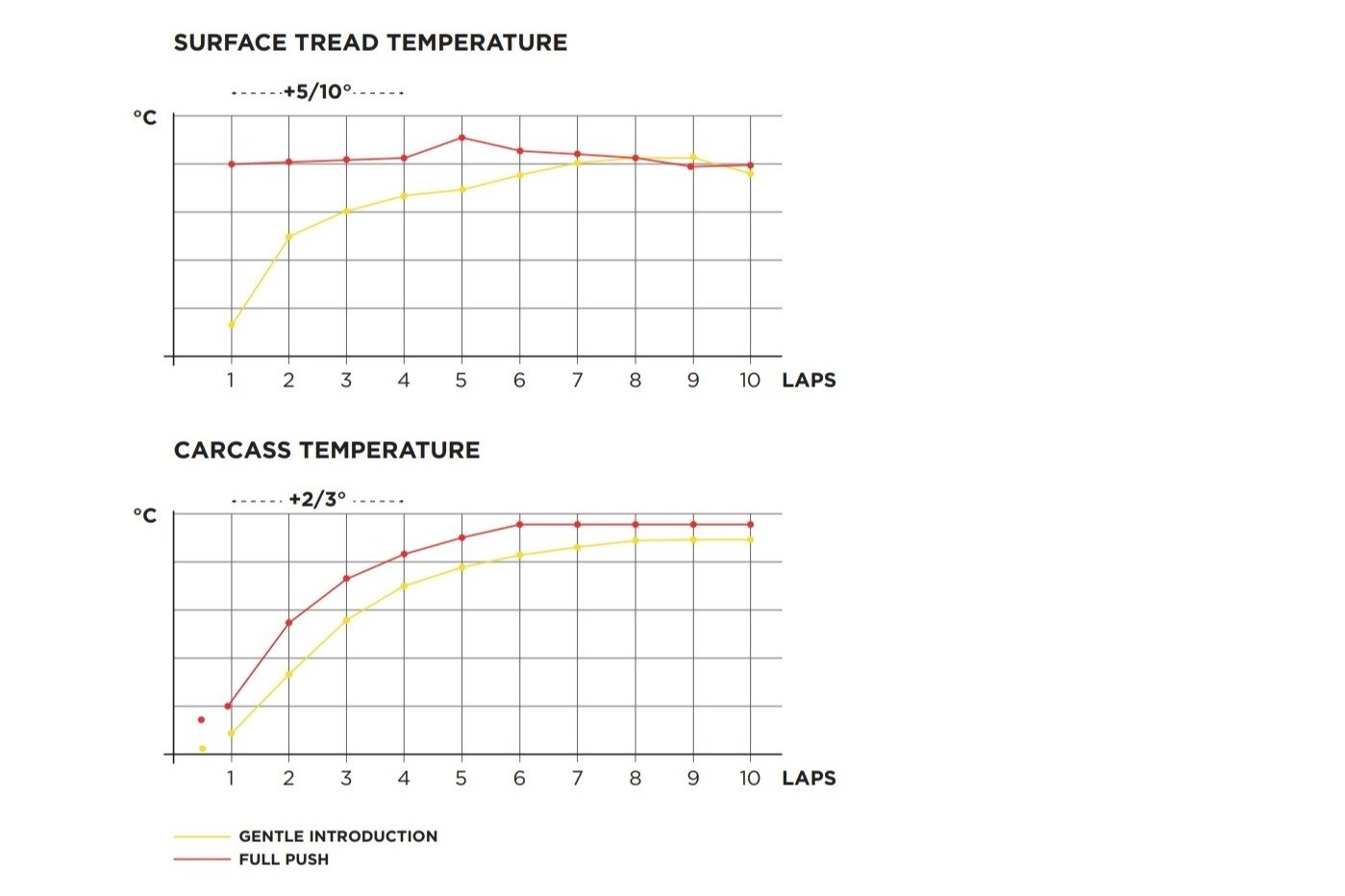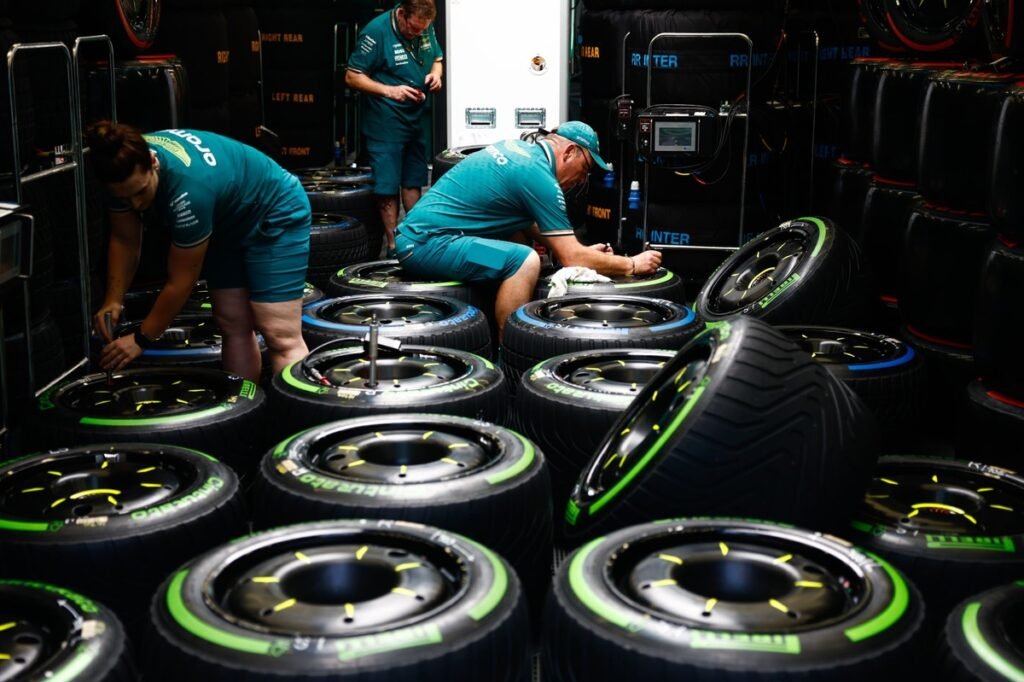As the Formula 1 grid has got ever closer, detail differences have become more critical in the fight for wins.
One area that is getting increasing attention is tyre behaviour – and especially how to manage them over race stints better than your rivals.
Teams and drivers have quickly come to understand that there are some special tricks needed to master what Ferrari’s Carlos Sainz has labelled ‘Pirelli magic’.
What he is referring to specifically is a trait that the current generation of tyres have – in that how they behave over a full race stint is entirely dependent on how they are treated in their first few laps out of the pits.
If you go too hard too early, the tyres can overheat and lose performance. But go too slow out of the pits for a nice gentle introduction and you risk losing track position.
There was perhaps no greater example of this playing out than the Azerbaijan Grand Prix.
Charles Leclerc’s tyres fell away in the closing stages after he had been forced to push hard early in the final stint as he battled with Oscar Piastri.
That late drama was in contrast to drivers like Sainz and George Russell, whose tyres came alive as they had gone easy on them initially. As Sainz said about this dilemma between pushing hard or going easy: “It’s a very fine line, very tight method to apply.
“You have to play a bit of the Pirelli magic, depending on the track layout and tarmac, even the compounds, as some compounds are more sensitive to them than others.
Carlos Sainz, Ferrari SF-24
Photo by: Simon Galloway / Motorsport Images
“You need to then put the strategy into perspective, evaluate if it’s going to pay off to do it now, or is the undercut/overcut too important to risk that introduction.
“You have so many things to consider during those first three laps of the stint: whether you want to spend your coins on those laps or you want to spend them later in the race.
“It’s very easy to misjudge, because you never know what’s going to happen in the future. And you might have wasted your coins in something that was not worth it.”
So what is really going on here to trigger this phenomenon? The key element of this ‘Pirelli magic’ relates to tyre temperatures, and how that can be so heavily influenced by the introduction of fresh rubber.
As Pirelli’s head of F1 and car racing Mario Isola said: “It’s a matter of thermal behaviour of the compound.
“The transition between 70 degrees [which the tyres are warmed to in the blankets] and the running pressure is quite important because you modify the chemical links in the compound, and this can generate thermal degradation.
“If you introduce the tyre in a gentle way for the first couple of laps, you shock the tyre less, you stress the tyre less and you have less degradation.”

As the above graph shows, giving the tyre an easier introduction means the surface temperature does not spike, and that has long-term benefits for the more crucial carcass temp.
Isola added: “It’s mostly about the chemicals. If you put a lot of energy into the tyre and a lot of heat, then you modify your chemical links and this is generating more degradation.”
But while the theory of this ‘Pirelli magic’ is clear, actually being able to deliver it is not so straightforward – because it is not as simple as telling the driver to take it easy for the first laps out of the pits.
Isola added: “It’s not a matter of going slower, because sometimes you need to push a bit more to heat the front tyres.
“So it depends on the set-up of the car. It depends how much you want to protect the rear tyres. If you protect the rear tyres a lot, then you need to heat up the front tyres, so you need to push a bit more.
“If you slow down too much then the risk is that you don’t have the tyres ready. I’m sure it’s a challenge for the teams.
“They have engineers that are dedicated to understanding how the tyres work and how they can extract the peak performance from the tyres.
“I know that all the teams are instructing their drivers on how to do the out-lap in order to get the best from the tyres. They have the temperatures on the steering wheel, so they know how much they have to push and how much they have to back off in order to have the tyres ready when they want.”
Mario Isola, Racing Manager, Pirelli Motorsport, in the team principals Press Conference
Photo by: Zak Mauger / Motorsport Images
It is little wonder that Haas devoted a lot of its running at the pre-season Bahrain test to focusing on this area of race performance. Team boss Ayao Komatsu said: “For the first two days we thoroughly, thoroughly focused on that.
“That was both from the engineering side, defining how to manage it, and then drivers to execute it as well, and how to feel it.
“We wanted to know that if you do different management, this is the result of it in terms of tyre degradation. It was a team effort and we are still learning.”
But while the ‘Pirelli magic’ is a key focus for everyone now, Isola is clear on one thing: it has only become relevant because other areas of the cars are no longer making the difference.
“It is about how competitive the championship is right now,” he said. “The Pirelli magic is not Pirelli magic, as we are using the same compounds that we used last year when no one was talking about this.
“If you have a big advantage like Max [Verstappen] a few years ago, then you don’t really care if you are in the peak of grip or close to it.
“But if you have to fight for a position and you have three or four drivers within a tenth of a second, then you can understand how important it is to stay in the peak of the grip.”
It is also fair to say that the task is never-ending – and getting the ‘Pirelli magic’ spot on one weekend is no guarantee you will get it right the next.
As Aston Martin performance director Tom McCullough said: “That’s the balance between my tyre engineers, my strategy engineers, and my drivers that I am juggling the whole time. It’s different track to track, compound to compound.
“So that is what you’re trying to learn on a Friday. So we sort of go into Friday with a Mr. Tyres wants this to happen, and Mr. Strategy wants this to happen. What do we agree is the best plan? Then we try to do that…”
Lance Stroll, Aston Martin AMR24, on the grid
Photo by: Zak Mauger / Motorsport Images
Read the full article here


